There are consumer durables that outgrow their humble origins and go on to become an acme of their craft, turning their brand names into generic terms.
Hence why William Henry Hoover’s eponymous invention subsumed the term vacuum cleaner. Hence also why Lazlo Biro’s surname became the synonym for the ballpoint pen.
Ford has come close to doing the same for the humble panel van, with the immortal Transit, while Jeep, in spite of being a distinct corporate entity since 1946, is what some people call all 4x4s and SUVs. Even when they’re not actually Jeeps.
Personally, I think Skoda should be given this same accolade when it comes to estate cars. The Czech company, thanks to its combination of thoughtful practicality and capacious load areas, really has perfected the art of the estate car in the past two decades, and this latest generation of Superb Combi (Combi is Skoda-speak for estate) just truly hammers home that domination of the class.
READ MORE
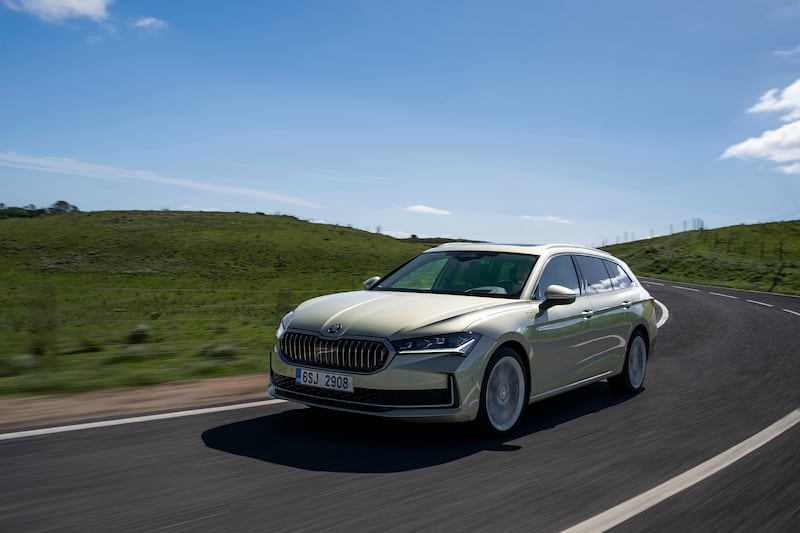
There is a clear danger of hubris in naming any car Superb, but Skoda has been successfully dancing along that precipice between glory and failure ever since the first modern Superb (the name dates back to 1934, many decades before it was reintroduced in 2002 as a rebodied VW Passat B5) went on sale.
[ Skoda Kodiaq review: A solid, sensible choice – but at a priceOpens in new window ]
Back then, the Superb represented the most amount of interior space you could get for an affordable price. Now, that price has gone up – waaayyy up – yet the Superb still somehow manages to represent solid value for money with a price tag that starts at €48,000. How? Well, put it this way; the most affordable Mercedes-Benz E-Class Estate is €85,875. And the Superb is the better car.
For a start, it’s even bigger in the back. The mighty Mercedes seems to have an unassailable 615 litres of boot volume, right up to the point where this new Superb Combi thoroughly assails it with 690 litres. Fold down the back seats (which split-fold 60:40, with a ski-hatch in the middle) and you really will need a Transit (other vans are available) to compete. It’s just huge.
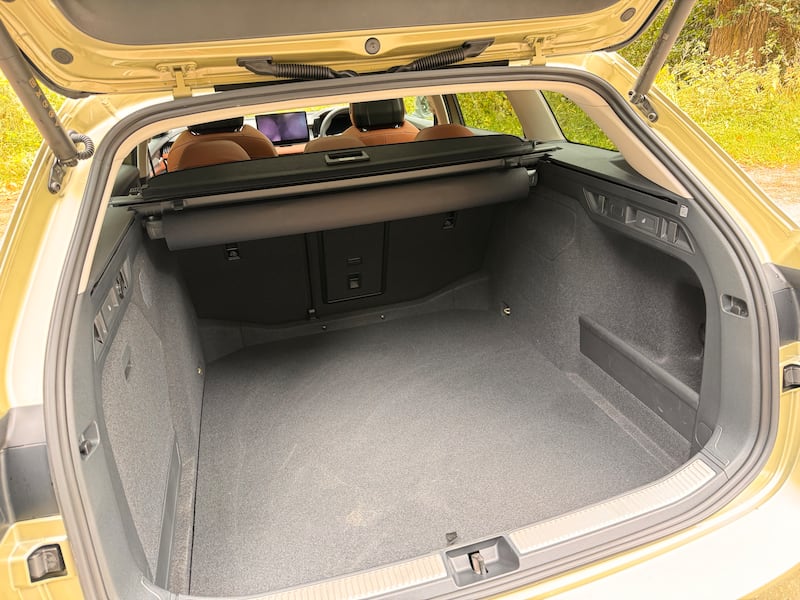
Flip the back seats back into place, and there’s copious legroom and headroom – even with the expensive optional glass roof – for rear seat passengers. Up front, there are sumptuous chairs on which to sit which, in the optional brown “Cognac” leather of our test car, look and feel truly luxurious.
[ Skoda’s diesel Octavia RS: there are just some cars that feel made for IrelandOpens in new window ]
As does the Superb’s cabin. Yes, there are some cheap plastics around, but they’re few enough in number. What looks like recycled Darth Vader helmet material on the dashboard are actually strakes which neatly integrate the air vents with the rest of the dash, and which catch the light in an intriguing fashion. There’s also an interesting take on wood appliqué, which looks almost like parquet flooring.
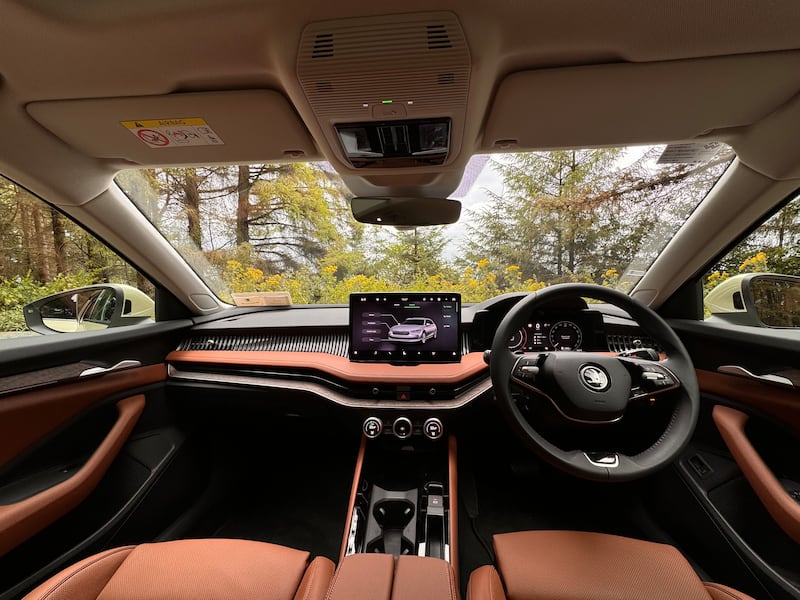
The big screen in the centre of the dash is okay – it’s reasonably simple to use, but still more confusing, distracting and time-consuming than it ought to be – and it’s helped by the trio of physical (hurrah!) rotary switches below, which look after such functions as cabin temperature, seat heating (and cooling, in posh versions), stereo volume and such like. They feel flimsier than they look, but at least they’re easy to use when you’re driving, and less distracting than on-screen controls.
Because the gear selector for the seven-speed DSG automatic gearbox has moved to the steering column, there’s plenty of storage in the centre console, including a wireless phone charger that has little cooling fins so that your phone doesn’t overheat when on charge. That’s typical of a car-maker which still gives you an ice scraper in the fuel filler, and an umbrella in a slot in the driver’s door.
[ Yangwang U8: BYD’s monster SUV is already infamousOpens in new window ]
Speaking of fuel fillers, this Superb runs on old-school diesel. Or does it? The 150hp TDI 2.0-litre engine can certainly run on regular diesel, but Skoda has a deal in Ireland with fuel supplier Certa to encourage the use of HVO (Hydro-treated vegetable oil) recycled biodiesel which it’s claimed (salt suitably pinched) have CO2 emissions 90 per cent lower than those of dinosaur diesel.
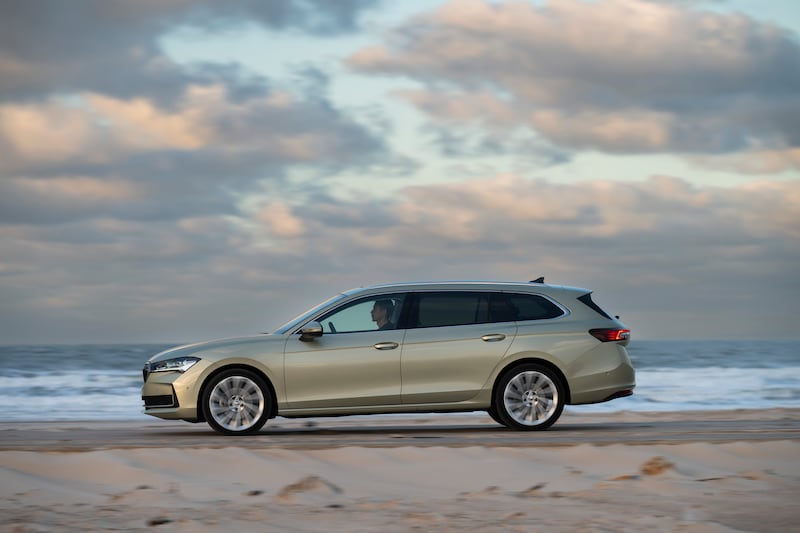
Whether that’s the full truth or not, the engine is spectacularly economical, averaging 5.2 litres per 100km with ease. In comparison, using the same engine in the mechanically related Kodiaq SUV saw us getting more like 7.0 litres per 100km. Okay, so the Kodiaq has seats for seven, but its rear seats are so small as to be all but useless, so frankly you’d still be better off in the Superb.
Way better off. Yes, this is me ragging on SUVs again, but the Superb Combi is the perfect, ineluctable proof that if you’ve bought an SUV in the past 10 ten years, and you don’t actually need four-wheel drive and raised ride height to tackle serious off-road terrain, then you’ve bought the wrong car. The wrong car for you, the wrong car for the planet.
[ Polestar 3 is an SUV that doesn’t want to be tallOpens in new window ]
Honestly, the driving experience comparison between the Superb and the Kodiaq is just night and day. The Kodiaq feels big, bulky and vague in its responses. The Superb feels accurate, secure and even quite slim-hipped (it is, in fact, fractionally narrower than the old one). The steering is well-weighted, the ride tolerably gentle except when dealing with the worst urban surfaces, and personally I feel safer sitting low down, with a responsive car under and around me, than sitting way up high, teetering on tall springs. Do you get a better view out with an SUV? No, because everyone else has one and guess what, they’re driving in front of you.
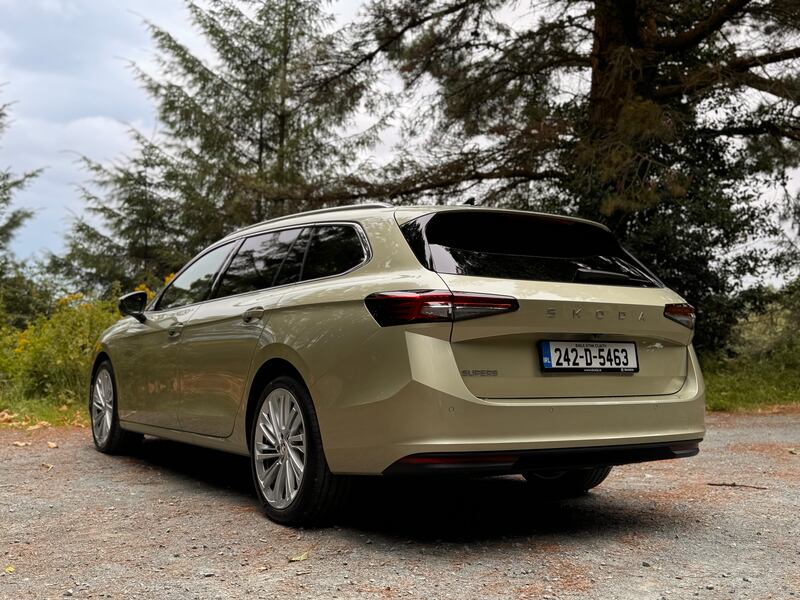
I’m not sure I’d pick this 2.0 TDI engine. I adore the economy and the 1,100km range on a full tank, but it’s not the quickest engine and the gearbox is a bit slow-witted too. I reckon the new plug-in hybrid, with its exceptional 125km electric range, might be the better option, although we still have to prove that particular pudding on Irish roads, and the boot is smaller, although a still-impressive 510 litres.
[ Mercedes-Benz reveals Concept Coupé SUV at Beijing auto showOpens in new window ]
Yes, this Superb is expensive now – £53,325 for this Selection+ model, plus €6,000 worth of extras on this particular car – but it bears easy comparison with cars costing a third again as much. Perhaps some day, you’ll sign the warranty for your new Hoover with a Biro and then head out to your roomy Superb in the car park. This Skoda Superb deserves nothing short of that accolade.
Lowdown: Skoda Superb Combi Selection+ 2.0 TDI DSG
Power: 2.0-litre four-cylinder turbo diesel engine with 150hp and 360Nm of torque driving the front wheels through a seven-speed automatic gearbox.
0-100km/h: 9.3 secs.
Emissions (motor tax): 135g/km (€210).
Fuel consumption: 5.2-5.4 l/100km (WLTP).
Price: €60,051 as tested. Superb from €48,325.
Verdict: If you can justify the diesel fuel (or HVO) then this new Superb estate is just about unbeatable as an all-rounder.















